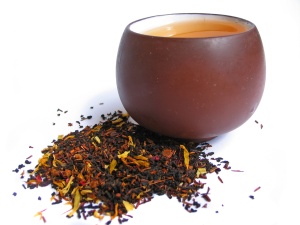Having only recently come out of high school I can still all too clearly remember the ‘healthy’ meals that were served daily. It only took a tentative poke of the fork to determine the majority of these foods were questionable to say the least. Many of my classmates and I were more inclined to order the more expensive option of just fries, at least they looked safe. A growing movement of people who usually target food places like McDonalds and Taco Bell have now set their sights on the school cafeteria who it seems has picked up a potentially hazardous ingredient most fast food chains have tossed.
I’m talking about Pink Slime the product created “by gathering waste trimmings, simmering them at low heat so the fat separates easily from the muscle, and spinning the trimmings using a centrifuge to complete the separation. Next, the mixture is sent through pipes where it is sprayed with ammonia gas to kill bacteria. The process is completed by packaging the meat into bricks. Then, it is frozen and shipped to grocery stores and meat packers, where it is added to most ground beef.”
These trimmings have for some time been deemed inedible for humans and were used in dog and other animal feeds. However, Gerald Zirnstein a former US Department of Agriculture Scientist says that a whopping 70% of the ground beef we purchase in supermarkets contains pink slime. After protests from consumers many fast food chains like the ones mentioned above claim they have pulled the product from their manufacturing process. Unfortunately it appears to have been redirected to the school cafeterias!
Who would do such a thing? Apparently the US Department of Agriculture has shelled out enough to purchase over 7 million pounds of the stuff which will soon be hitting the plate in front of your child in the form of burgers. Just recently the government passed regulations to provide students with healthier meal options that include more whole grains and fewer fats. While their intentions may be good (the product is treated to kill bacteria’s such as E. coli and Salmonella) the process uses chemicals like ammonium hydroxide which is a common ingredient in cleaners and fertilizers. Despite their efforts “In 2009, The New York Times reported that despite the added ammonia, tests of Lean Beef Trimmings of schools across the country revealed dozens of instances of E. coli and salmonella pathogens. Between 2005 and 2009, E. coli was found three times and salmonella 48 times, according to the Times, including two contaminated batches of 27,000 pounds of meat.”
The USDA still asserts that its ground beef purchases meet the highest standard for food safety. Which leads me to wonder if ammonia treated beef trimmings once used in pet food is now sold in the meat aisle have those standards lowered or have we been eating “mystery meat” all along. With the odds stacked against it and public outcry on the rise I wonder how long the pink slime will stay on the menu. What do you think? Is the public introduction of these meat products a safe food source or are we being duped? Will you start packing your kids lunches or are you ok with what some call a healthy meal?
Related articles
- ‘Pink slime’: Combo of scraps hidden in kids’ lunches (foxnews.com)
- Is Pink Slime in Your Beef? (abcnews.go.com)
- Pink Slime For School Lunch: Government Buying 7 Million Pounds Of Ammonia-Treated Meat For Meals (our-compass.org)
- Soylent Pink (ediblearia.com)




